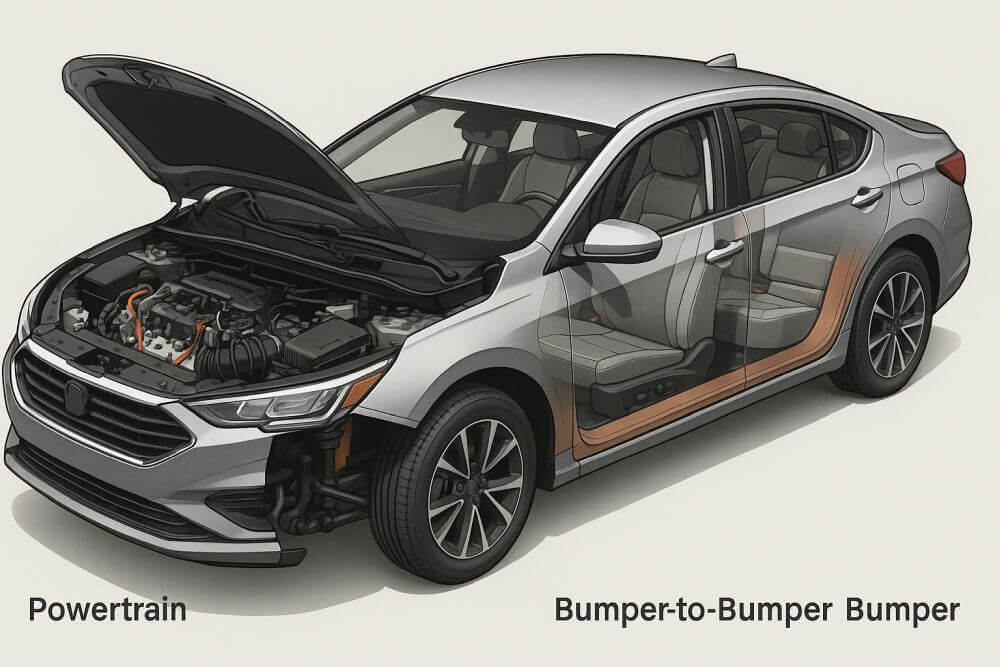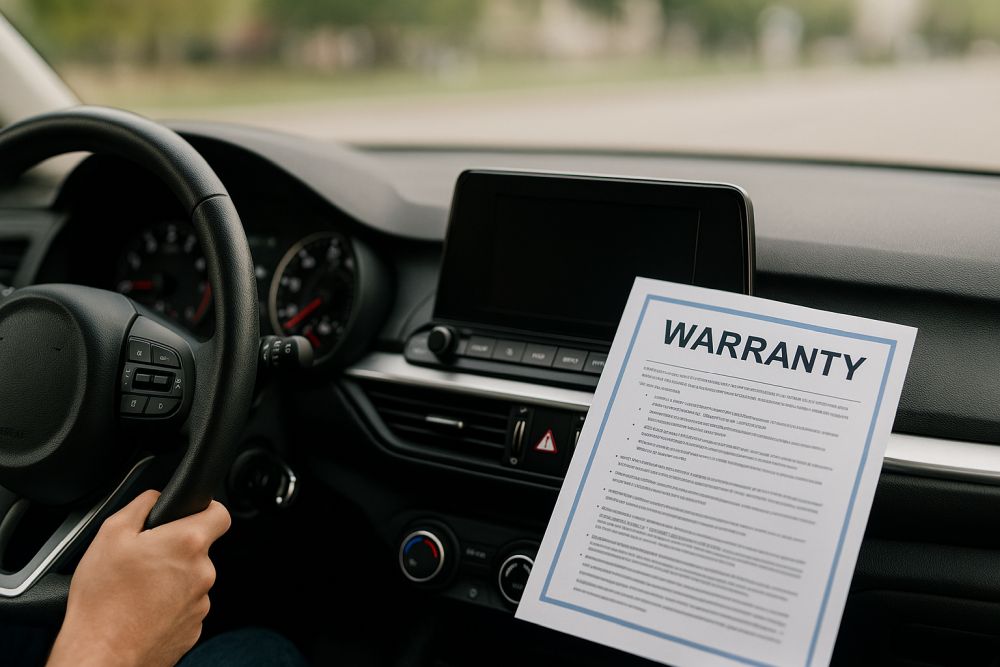When buying a car—especially a used one—it’s easy to assume the word “warranty” means full protection. But did you know that not all warranties cover the same parts of your vehicle? In fact, there’s a major difference between powertrain and bumper-to-bumper warranties. Knowing what each one covers can save you from surprise repair bills and help you make smarter vehicle decisions.
In this guide, we’ll break down each warranty type, compare what they cover, when they expire, and how to check your warranty status using just your VIN.

Use this warranty check tool to instantly find out if your vehicle still has powertrain or bumper-to-bumper coverage using your VIN.
What Is a Powertrain Warranty?
A powertrain warranty covers the essential systems that make the car move. It typically lasts longer than other warranties because these components are expected to endure more wear over time and are expensive to repair or replace.
✅ What’s Covered:
- Engine (cylinder block, pistons, timing chain, oil pump)
- Transmission (gears, torque converter, clutch, seals)
- Drive axles & differentials
- Driveshafts, CV joints, U-joints
- Transfer case (in AWD/4WD vehicles)
❌ What’s Not Covered:
- Electrical systems
- Suspension and steering
- Heating and cooling systems
- Interior and cosmetic features
- Routine maintenance
🛠️ Why It Matters:
If your engine blows or your transmission fails while the powertrain warranty is active, the repair could be fully covered—saving you thousands.
What Is a Bumper-to-Bumper Warranty?
Often called a comprehensive warranty, this covers nearly all parts of the car from the front bumper to the rear bumper, excluding only “wear items.”
✅ What’s Covered:
- Electrical components (power windows, sensors, infotainment)
- AC and heating
- Safety features (airbags, ADAS sensors)
- Suspension system
- Fuel system
- Interior and dashboard controls
❌ What’s Not Covered:
- Tires, brake pads, wiper blades, light bulbs
- Scheduled maintenance (oil changes, filters, spark plugs)
- Any damage from abuse or improper maintenance
🛠️ Why It Matters:
Bumper-to-bumper warranties give peace of mind during the first few years of ownership—especially for newer or certified pre-owned (CPO) vehicles.
Powertrain vs Bumper-to-Bumper – Key Differences
| Feature | Powertrain Warranty | Bumper-to-Bumper Warranty |
|---|---|---|
| Coverage | Engine, transmission, drivetrain | Almost everything except wear items |
| Duration | Longer (e.g., 5–10 years, 60k–100k miles) | Shorter (e.g., 3–5 years, 36k–60k miles) |
| Repair Cost Protection | High-cost breakdowns | Broad, smaller component issues |
| Exclusions | Most non-drivetrain components | Routine maintenance, tires, brakes |
| Common for | Used cars, longer-term coverage | New cars, early protection period |
How to Do a Powertrain Warranty Lookup by VIN
You don’t need to call the dealer or dig through paperwork to check warranty coverage.
Just follow these steps:
- Find your 17-character VIN (on your dashboard, door frame, or title).
- Use this warranty check tool.
- View your car’s:
- Original in-service date
- Powertrain warranty duration
- Bumper-to-bumper expiration
- Remaining miles or months
- Manufacturer support contacts
Warranty Timeline Example
Let’s say you’re looking at a 2021 Hyundai Elantra with 28,000 miles. Hyundai offers:
- 5-year/60,000-mile bumper-to-bumper
- 10-year/100,000-mile powertrain
With the VIN, you discover:
- Bumper-to-bumper: valid for 2 more years
- Powertrain: valid for 7 more years or 72,000 more miles
That’s a huge value boost in the deal!
What Happens When a Warranty Expires?
If your powertrain or bumper-to-bumper warranty is expired:
- You pay all repair costs out-of-pocket
- You may still qualify for extended warranties
- Some components might still be covered under recalls
A VIN-based warranty lookup will reveal all these details.
Extended Warranty vs Factory Warranty
| Warranty Type | Provided By | Usually Covers | Cost |
|---|---|---|---|
| Factory | Vehicle manufacturer | Set coverage from new | Free (included) |
| Extended (VSC) | 3rd party or OEM | Custom plans (powertrain or full) | Paid plan |
Want to see if you’re eligible to extend coverage? A VIN lookup will show your eligibility and current protection level.
Final Tips Before You Buy or Sell
- Always check warranty status before finalizing a used car purchase
- Don’t rely on seller claims—verify it with the VIN
- If you’re selling a car with valid warranty, mention it in the listing
- Consider purchasing an extended powertrain plan if the factory one is about to expire
Frequently Asked Questions (FAQ)
Can I check powertrain warranty status with my VIN?
Yes! Use a VIN lookup tool to access your vehicle’s factory warranty coverage, including powertrain and bumper-to-bumper expiration.
Is bumper-to-bumper the same as full warranty?
Not quite. It covers most components, but excludes wear-and-tear items like brakes, tires, and oil changes.
Does powertrain cover the battery?
Usually not. EV/hybrid batteries are covered under separate warranties. Standard batteries are typically excluded.
Can warranties transfer to new owners?
Yes, most factory warranties transfer, though some extended warranties may not. Always verify using the VIN.
Want to Know Your Warranty Coverage Right Now?
Just enter your VIN to see your current warranty status—it’s fast, free, and secure.
👉 Use this warranty check tool to instantly check both powertrain and bumper-to-bumper coverage details.


